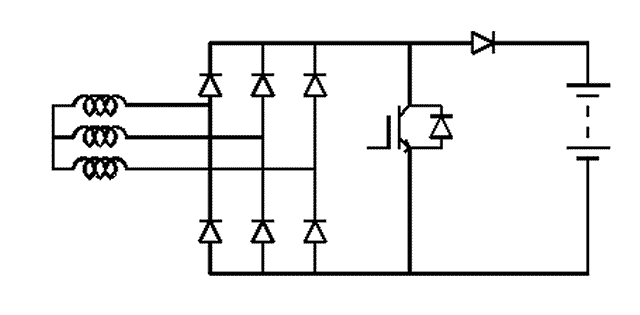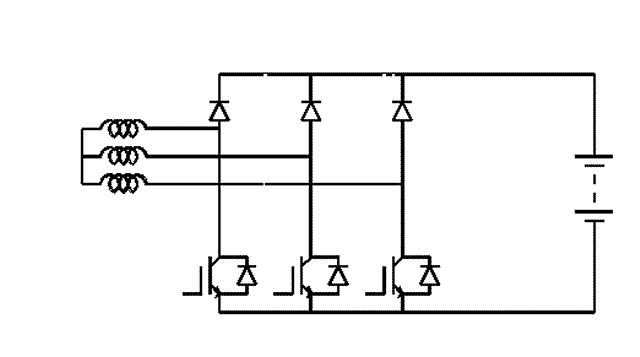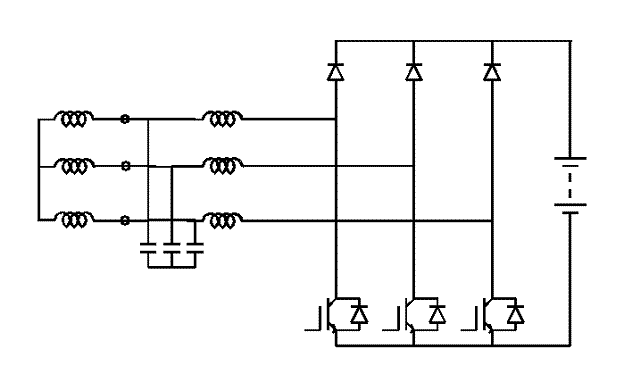Just a bit of an update.
Some time ago I posted a circuit using the alternator winding inductance as part of a boost converter. At that time I suspected that airgap alternators did not have enough inductance to make this work.
I was wrong and they do have enough to make it work at a few kHz. This method does have one advantage over the scheme I showed before, the diode drop is inside the boost voltage and has less effect.
This is the basic scheme.

The active thing is a mosfet, sorry for the IGBT symbol but is easier to draw.
The series diode drop can be got rid of by using 3 mosfets in the bridge.

The 3 mosfet gates are driven together.
I tried this at about 5kHz and it works quite well. The machine squeals and it is fairlylikely that there is losses induced into the magnets but efficiency is quite good.
Having perhaps 100yds of cables radiating is not a particulary nice concept but would not matter if you have no near neighbours and don't listen to medium wave radio.
I wasn't prepared to persue things in this form so I looked at filtering the leads at the converter and adding small ferrite inductors, the inductance required at 30kHz is tiny, 200uH or so. The inductors can be a few turns round ferrite cores and cost little and can be made to cause negligible loss.
This is the set up.

Filter capacitors are about 10uF motor run capacitors.
This is about as simple as it comes. A pwm driver with current feedback is used to control mosfet gates.
I did this some time ago and more things need investigating but I haven't got round to it.
The diodes need to be fast. Normal fast diodes seem to have a very high volt drop but come in sensible packages.
Ultrafast diodes are better and for the 24v case you are still within the range of schottky. The thing that I don't like is the fact that these animals come in very uninspiring packages mainly TO220.
There is no problem within the range where boost is taking place but in higher winds the full machine current uses this bridge, mosfets using their body diode.
Up to about 40A this looks to be possible but I would be reluctant to take it much higher.
Decent package mosfets and schottkys come at a stupid price.
I have thought of ways to transfer part of the current to a robust diode bridge when out of boost but I haven't tried it.
I will leave it with you for now to think about until I have checked a few more things.
Flux